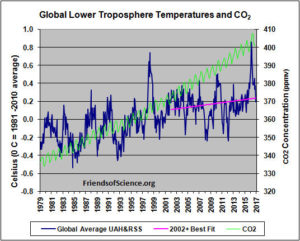by B. Stewart, Apr 26, 2024 in ClimateChangeDispatch

The Earth is approximately 4.5 billion years old. During the first four billion years, there were no hydrocarbons beneath the surface: no coal, no oil, no natural gas.
All the carbon atoms on Earth are in plants, animals, or the atmosphere. Yet the oceans did not boil. The Earth was not too hot for life. If it had been we would not be here.
The first lifeforms arose early in Earth’s existence.
The earliest fossils of microbes themselves, rather than just their byproducts, preserve the remains of what scientists think are sulfur-metabolizing bacteria. The fossils also come from Australia and date to about 3.4 billion years ago. (Wacey, D., Kilburn, M. R., Saunders, M., Cliff, J., and Brasier, M. D. (2011). Microfossils of sulfur-metabolizing cells in 3.4-billion-year-old rocks of Western Australia. Nature Geoscience, 4, 698-702. http://dx.doi.org/10.1038/ngeo1238.)
Bacteria are relatively complex, suggesting that life probably began a good deal earlier than 3.5 billion years ago.
However, the lack of earlier fossil evidence makes pinpointing the time of life’s origin difficult (if not impossible). (Hypotheses about the origins of life, Khan Academy.)
Organisms evolved that employ the process of photosynthesis. This plant life continues to consume carbon dioxide (CO2) and produce oxygen.
After a billion years or so, an atmosphere resembling that of the present day began to take shape. Earth’s present atmosphere is composed as follows:
It is important to note that in the above circle graphs, nitrogen, oxygen, and argon compose 99.964% of our atmosphere. The amount of CO2 is 0.04%.
…


